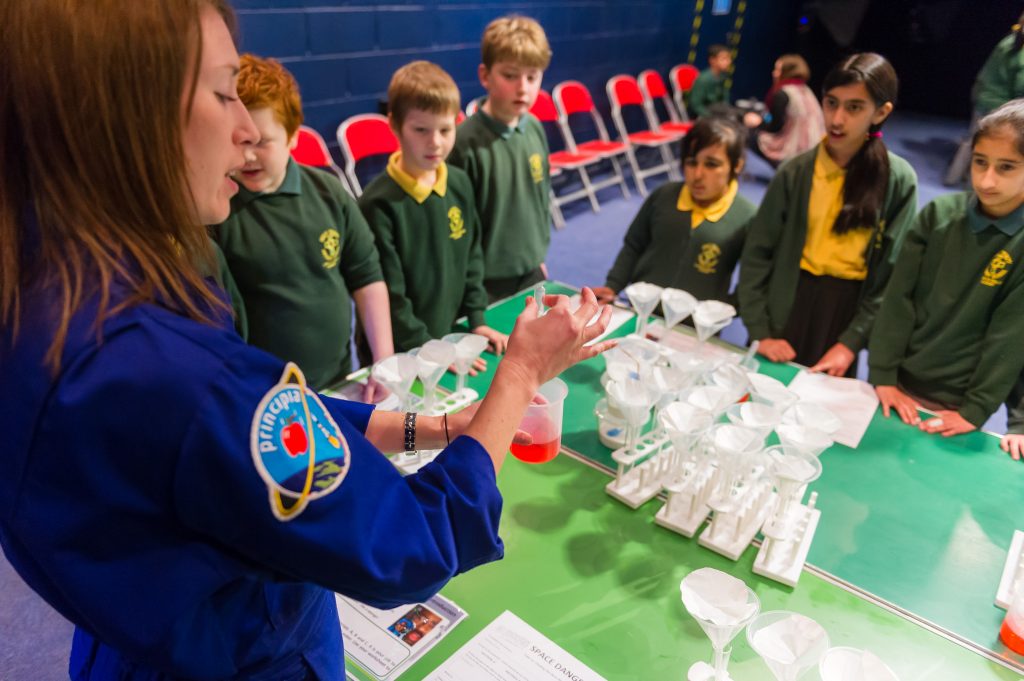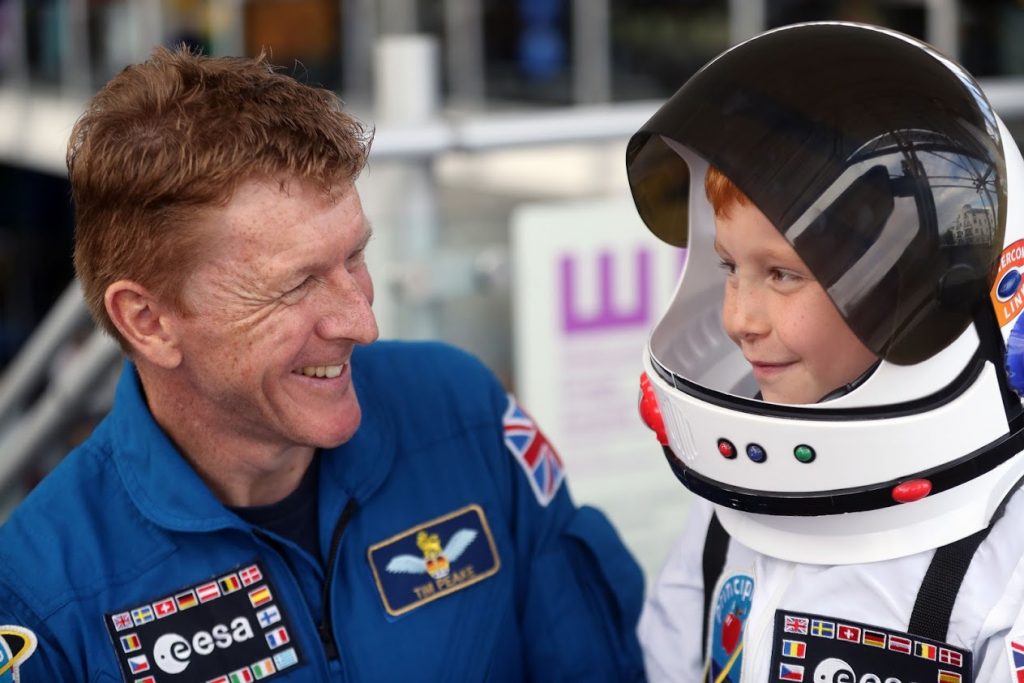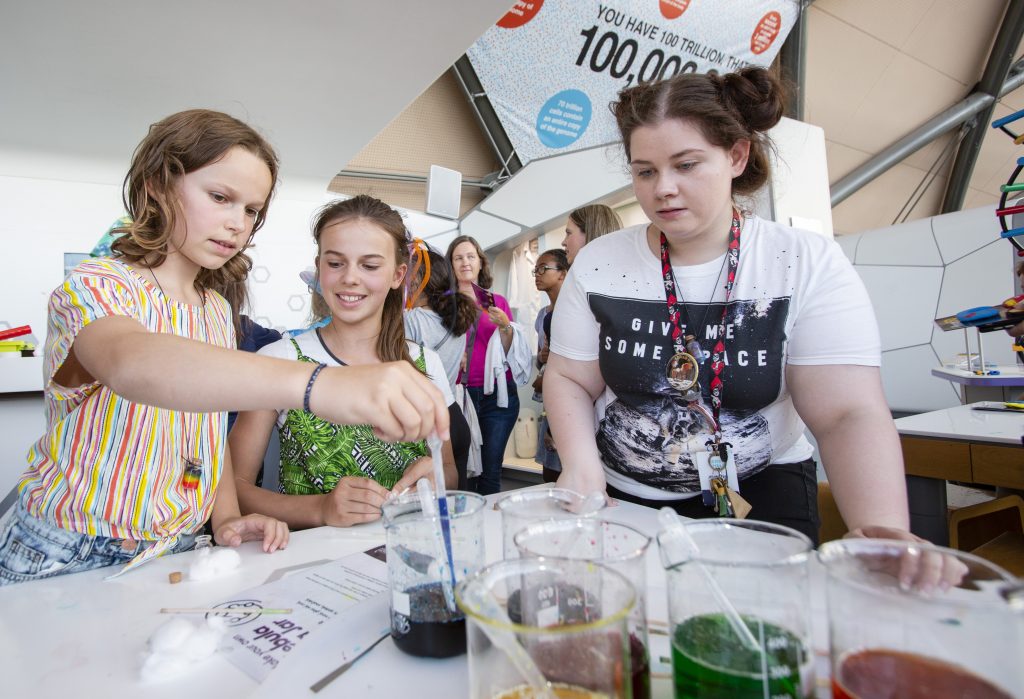Tomorrow’s world | Bringing museums and science centres together
Science and discovery centres are hives of activity, igniting enthusiasm for science across the UK. Pioneers such as Cardiff’s Techniquest emerged with the dream of bringing science to life for children outside the classroom in the 1980s. Eureka! which launched in Halifax, West Yorkshire, in 1992, was inspired by US and Canadian children’s museums.
Other venues that opened before the millennium include Aberdeen Science Centre, Catalyst Science Discovery Centre and Museum in Widnes. Lots of science centres were funded by the Millennium Commission, including Winchester Science Centre, W5 in Belfast, the National Space Science Centre in Leicester, Our Dynamic Earth, Edinburgh, Dundee Science Centre and many more.

Since the millennium, science centres have been on a journey to develop their missions and audiences and become sustainable organisations within their communities. That transformation has accelerated with the impact of global events, from the pandemic to the climate crisis and the Black Lives Matter protests after the murder of George Floyd in 2020.
“Science centres are no longer cathedrals of science, but more community assets,” says Shaaron Leverment, the chief executive at the Association for Science and Discovery Centres (ASDC).
Science centres are reaching beyond their walls, breaking down barriers and building relationships with communities. Leverment believes they must be reflective places of belonging, expanding opportunities for local communities to leverage science for their benefit.
The National Space Centre in Leicester is a premier league example. As part of its community engagement programme, it has worked with Leicester City Football Club and hosted after-school clubs at libraries.
By connecting science, innovation and society, science centres can help everyone prepare for 21st-century challenges. The goal is a society where science is accessible, inclusive and valued by all as part of everyday life, Leverment says.
Collaboration is a vital part of that process, and the science centre community has found its values increasingly aligned with the museum sector in recent years. The new Mindsets + Missions learning and grants programme comes at the right time.
Mindsets + Missions is backed by UK Research and Innovation (UKRI) and the Arts and Humanities Research Council and delivered by the Museums Association (MA), ASDC and The Liminal Space. There are 30 museums and science and discovery centres taking part in the first phase of the programme. There are also 15 individuals involved in the initiative as changemakers.
Mindsets + Missions aims to break science centres and museums out of their silos, encouraging the sharing of best practices, ideas and expertise, particularly involving under-represented groups.
Radical action
Craig Smith, Mindsets + Missions project officer at the MA, says: “The pandemic made science centres and museum leaders take bold approaches. I hope this project gives people the opportunity, time and confidence for those radical new things to happen, not just in a crisis, but as part of everyday practice.”
Rachael Harris, project manager at The Liminal Space, believes Mindsets + Missions recognises the “real appetite” for collaboration between the sectors.
“We wanted to create space for you to step away from your organisations and spend time together thinking how you might be able to do things differently,” she says. Mindsets + Missions will allow people to “bounce ideas off each other, take them back to their organisations, and then come back together again to work through them. We want it to be dynamic”.
Finding, reaching and engaging new audiences is vital to the survival of science centres, particularly with revenue from funding, admissions and membership all under pressure.
“The business case for equity, diversity and inclusion is really strong now,” Leverment says. “We leave our organisations very vulnerable if they are not working this way because what is their worth otherwise?”

We The Curious was only a few steps away from the protesters who tipped the statue of slave trader Edward Colston into Bristol’s harbour in June 2020. It was a pivotal moment, says Donna Speed, chief executive at We The Curious in Bristol.
“The eyes of the world were on us, and for good reason – we were taking a stand as a city,” she says. “As a place in the community and a trusted organisation, if we don’t say something about the inequalities and injustices in our society, then that speaks volumes.”
So, the attraction issued a statement affirming “cultural institutions are not neutral spaces” and “must not stay silent”.
A powerful voice
When the statue toppling happened, We The Curious was working with a Somali girls group on a video around the question, “Is there another me in the universe?” exploring issues such as stereotyping. Instead, the girls wanted to open up about the Bristol event, and it became an incredible piece on the floor of the venue.
“It was powerful because they were changing the narrative,” says Speed. “It shows how the power needs to be with communities and not with institutions.”
Equality, diversion and inclusion is a huge issue for We The Curious, which is going through anti-racism training.
“We want to make sure we are more representative of our city, so we are reimagining recruitment,” says Speed. It actively involves audiences through co-creation.
This work furthers the facility’s evolution from At-Bristol (as it was originally known) to the broader ambitions of We The Curious. A public consultation informed the change.
“The feedback said we needed to be not just for children,” says Speed. “We needed to stay interactive, be more challenging, more collaborative, and take a stance. And we had to change our name.”
Although the venue is still closed for repairs after a fire in 2022, Speed looks forward to again welcoming visitors to Project What If, its flagship exhibition, which opened a year before the blaze.
It features 69 exhibits combining art and science, inspired by the curiosity of Bristol’s residents. The project team selected seven themes from more than 20,000 questions collected from the public. These became “question constellations” – clusters of interactive exhibits, films and installations.
One stands out. “A five-year-old boy asked, ‘Can science see your soul?’ which was fascinating,” says Speed. We The Curious worked with the boy and his classmates to unpack what that might mean. “We did that with as many question-askers and communities as we could. It was a real shift in our approach that is audience-led.”

Leverment wants science centres to “bend ourselves around communities” to overcome barriers to participation. Science centres must be “for the community, from the community” rather than shrines to science. Socially engaged and equitable organisations can benefit from many more partnerships and funding sources.
“Museums and science centres can do deep, meaningful, impactful work, and funders are saying this is valuable,” says Leverment. So, whether it’s the levelling-up agenda or net zero targets, “if the ASDC and the MA can say, ‘we are organisations with powerful networks to deliver your key strategic aims’, that’s a great place to be”.
Playful learning
Eureka! The National Children’s Museum in Halifax opened its second branch, Eureka! Science + Discovery, in November 2022, at the Seacombe ferry terminal on the River Mersey. The new facility helps children up to 14 years discover how science, technology, engineering, arts and mathematics (Steam) shape their lives and builds on Eureka!’s work.
“It is hands-on, interactive and incorporates playful learning,” says Eureka! chief executive Leigh-Anne Stradeski. It has a more edgy, timely vibe that reflects the interests of children transitioning from primary to secondary school.
“To remain relevant, you need to be topical, stay close to your audience, understand what they want, and recognise changing social themes,” Stradeski adds.
She sees children growing up ever faster in the digital age. Eureka! has therefore made co-creation with children and young people central to its development. Eureka! Science + Discovery showcases stories that children want to tell.

The attraction has three main themes: Bodies, Homes and Nature. One of the themes that Homes explores is how we get around sustainably. The team invited children to design and build their own skateboards and consider how they reflected their identity. Another area explores people’s relationship with animals, particularly pets.
“The children we worked with wanted a giant cat, and that’s one of our ‘wow’ exhibits,” Stradeski says. Inside the 12-foot-high feline, children can test themselves against a cat’s reflexes and learn how the animals communicate.
Eureka!’s programming also helps children and young people see themselves in others who have blazed a trail in science. Stradeski expects to see increasing digital innovation in science centres in the future. “We know that’s a brilliant way to capture children’s and adults’ imaginations and encourage intergenerational engagement,” she says.

Techniquest in Cardiff set out to make science accessible to a wider audience through its Science Capital project in 2020. The extension to its building increased the science and discovery centre’s space by 60%, adding more than 50 new exhibits and more events space.
“If we hadn’t had that marvellous opportunity, we’d be in a very different place now,” says Lesley Kirkpatrick, chief executive at Techniquest.
“We know to be viable in the long term we need to be relevant to everybody. We still want to encourage young people into Stem (science, technology, engineering and mathematics) careers. But the Science Capital project needed to show people from different backgrounds and age groups that science was relevant in their everyday lives.”
The development was designed to diversify the venue’s content, audiences and income streams. It was crucial to safeguarding its future as it faced the phased reduction of its Welsh government funding. The Inspiring Science Fund (a partnership between UKRI and the Wellcome Trust) backed the transformative project and Techniquest raised £2.5m in match funding.

Techniquest remains true to its mission “to embed science in Welsh culture through interactive engagement”. The team trained in participatory action research with Cardiff University and worked with diverse communities to create crowd-pleasing, digitally enabled exhibits.
“Our audience and paying visitors are vital to generating sufficient revenue, so we endeavour to make sure they have the best time ever,” Kirkpatrick says. “All was going perfectly until Covid.”
Kirkpatrick had to cut costs to the bone to keep Techniquest afloat. “We had to lose over 50% of our team,” she says, including the four-strong community engagement team that had been making connections all over Cardiff. Closing for 14 months had a “catastrophic impact on our ability to engage with people,” she adds.
A world in crisis
While Kirkpatrick welcomes initiatives such as Mindsets + Missions, the reality is that it is hard for science centres to focus on things other than day-to-day work in an age of permanent crisis.
“We are not in a position, unfortunately, to do anything too ambitious while we’re steadying the ship.”

Kirkpatrick is proud that, despite the pandemic, Techniquest has established an equality, diversity and inclusion working group, growing with new trustees this year.
She hopes to build on their work with organisations like Pride Cymru, but such projects require funding. While Welsh politicians have supported Techniquest, those in Westminster have yet to recognise science centres’ worth. Kirkpatrick wants to see these centres recognised as part of the UK’s cultural offering to unlock more resources.
With proper support, science centres can become places where people from all walks of life hang out and connect with science. “These should be places for you, where you see yourself, and where you belong,” says ASDC’s Leverment.
Juliana Gilling is a freelance writer
Comments (1)
Leave a comment
You must be signed in to post a comment.
Maybe this will give some incentive to explore activities and careers related to heritage science: a fascinating heritage sector career path that is completely forgotten in most museum careers discussions!
Also, there’s plenty of mention of STEM / STEAM, but how often do museums ignore the M completely? Hopefully these grants will allow opportunities to rectify that.